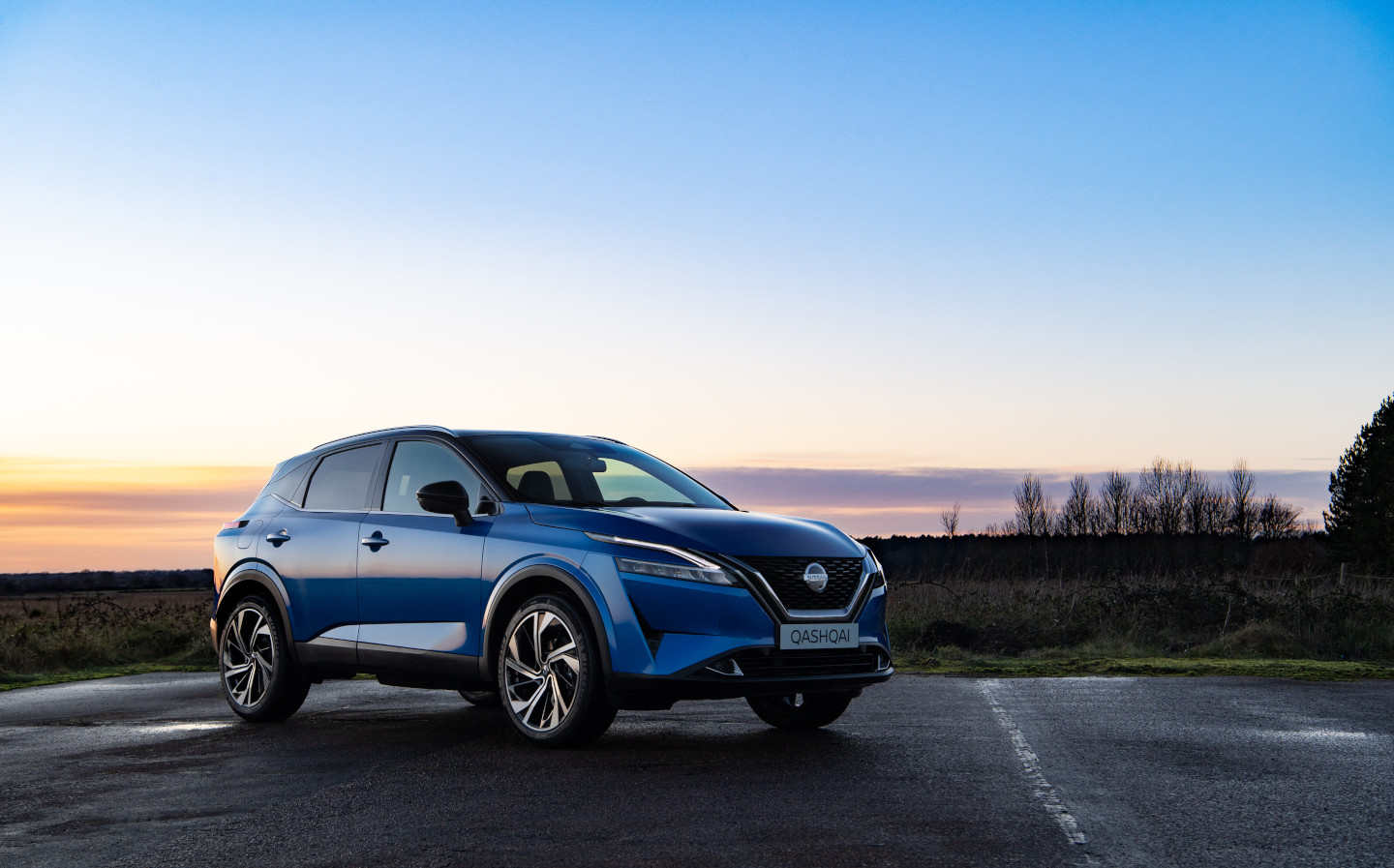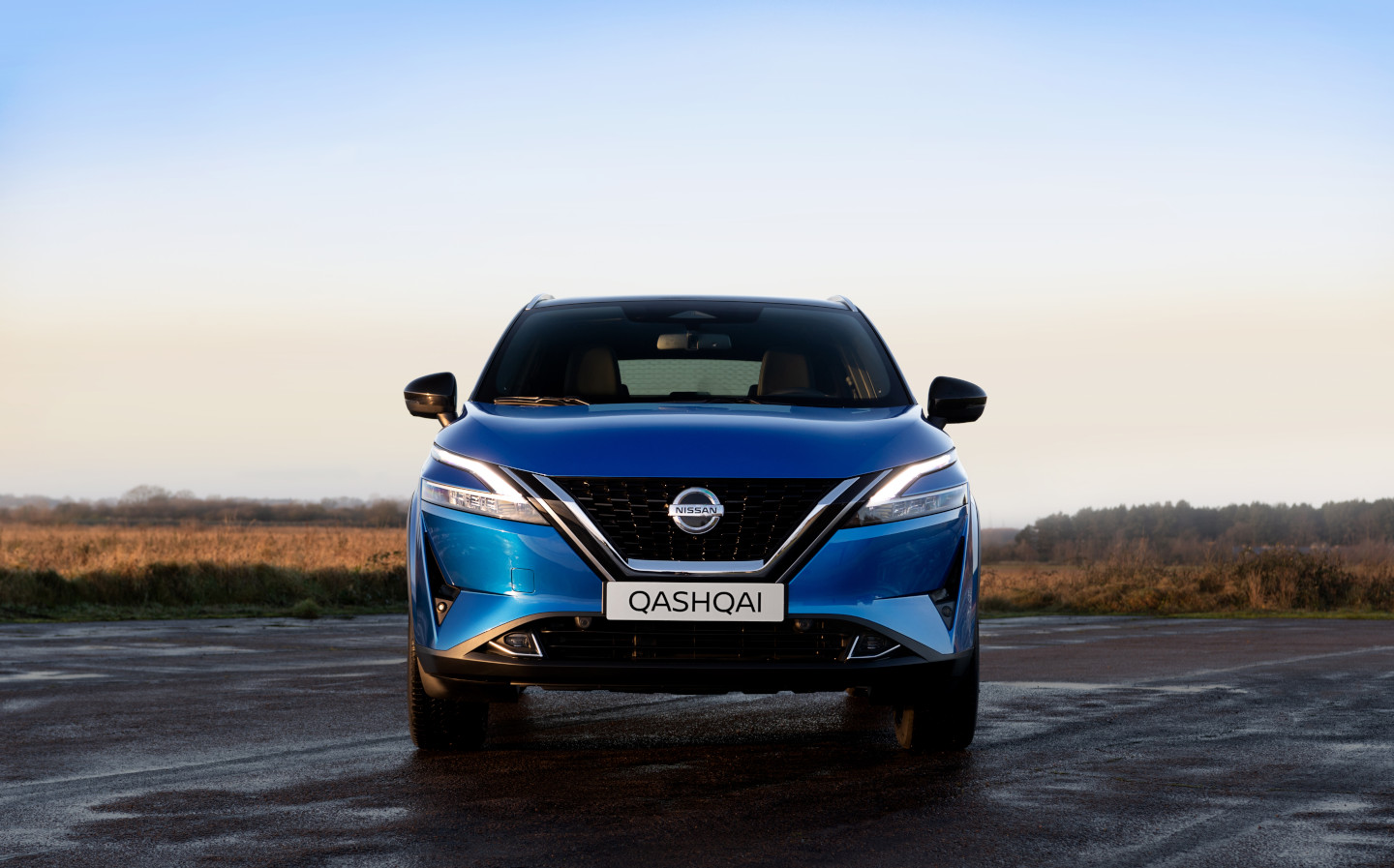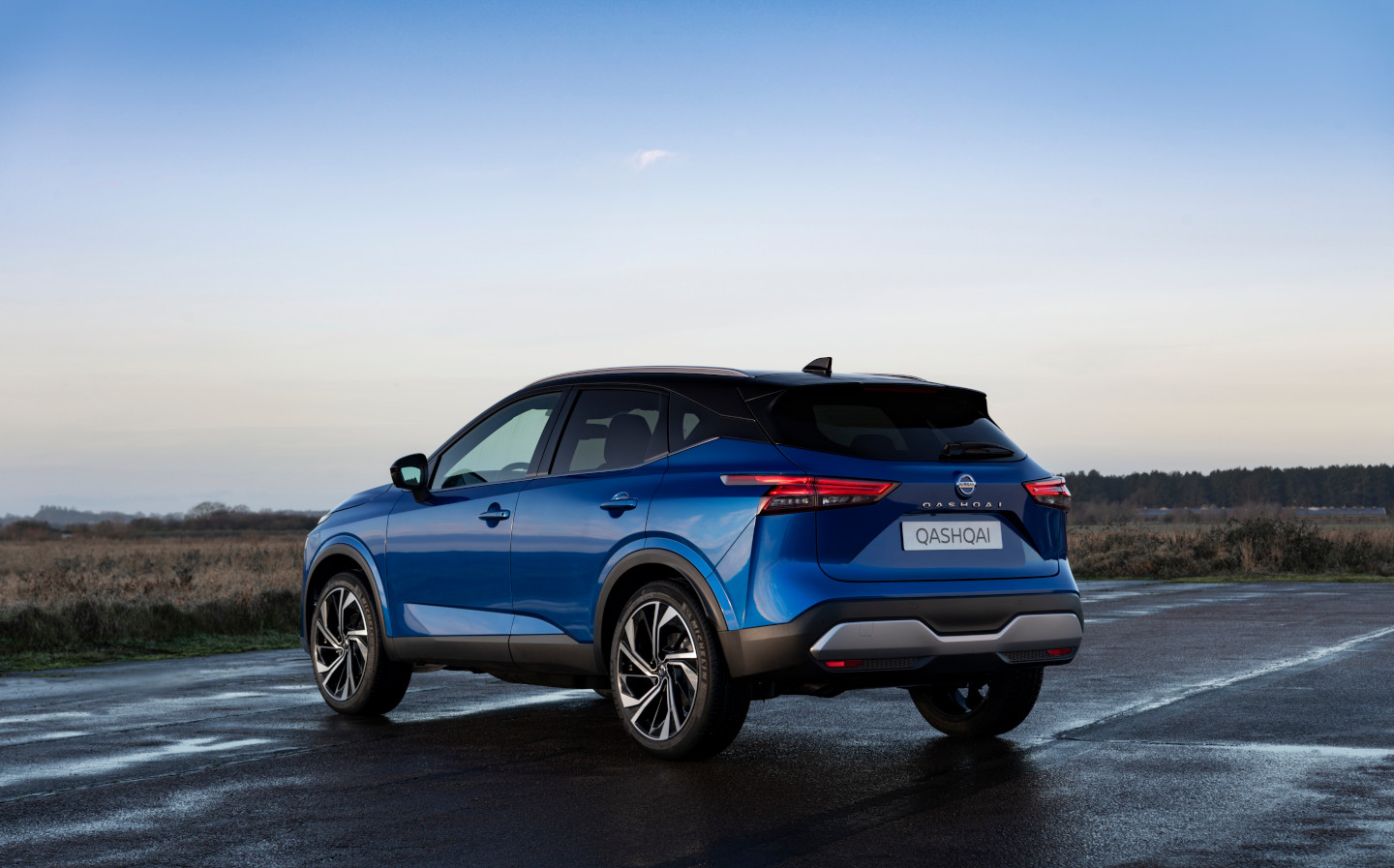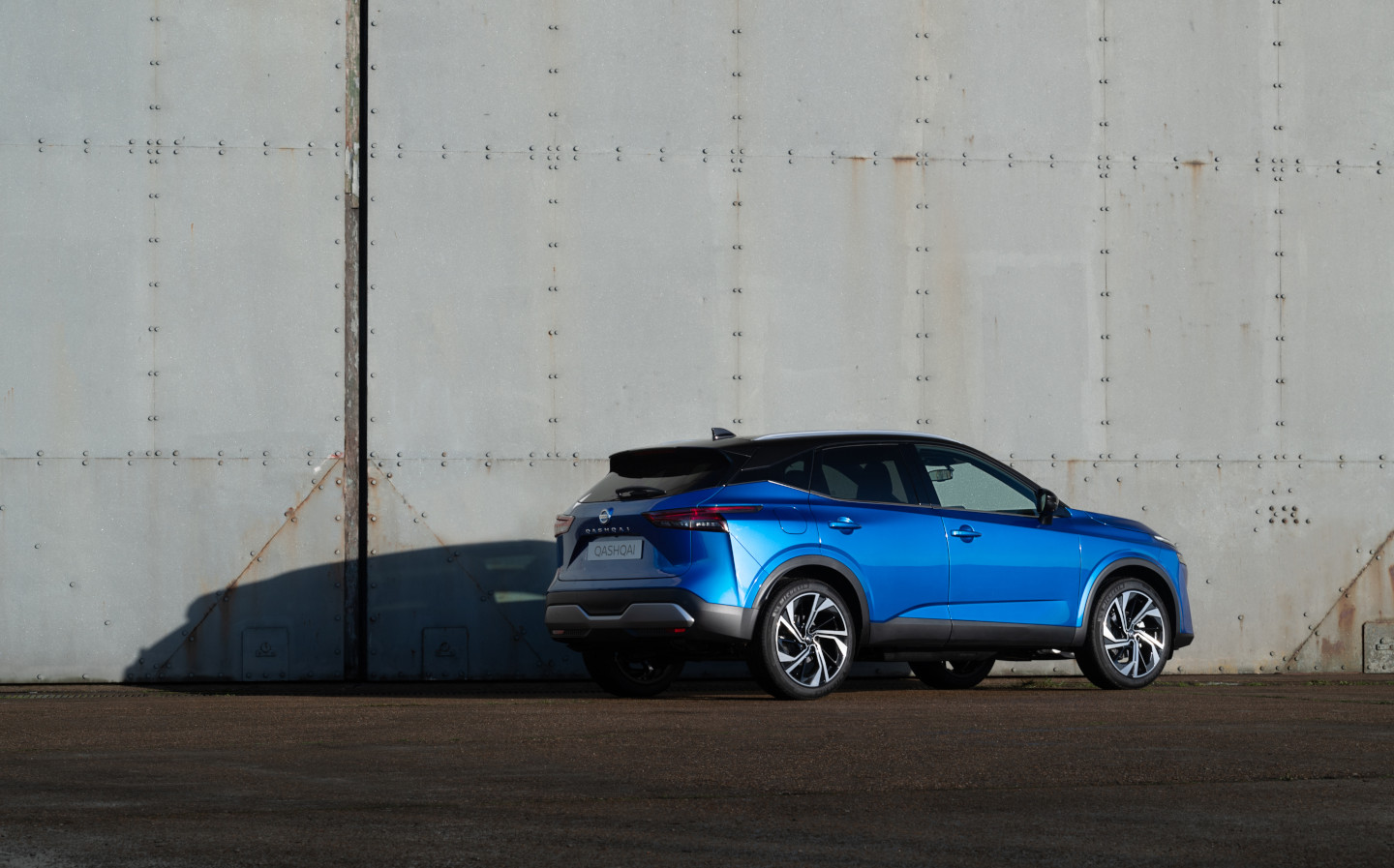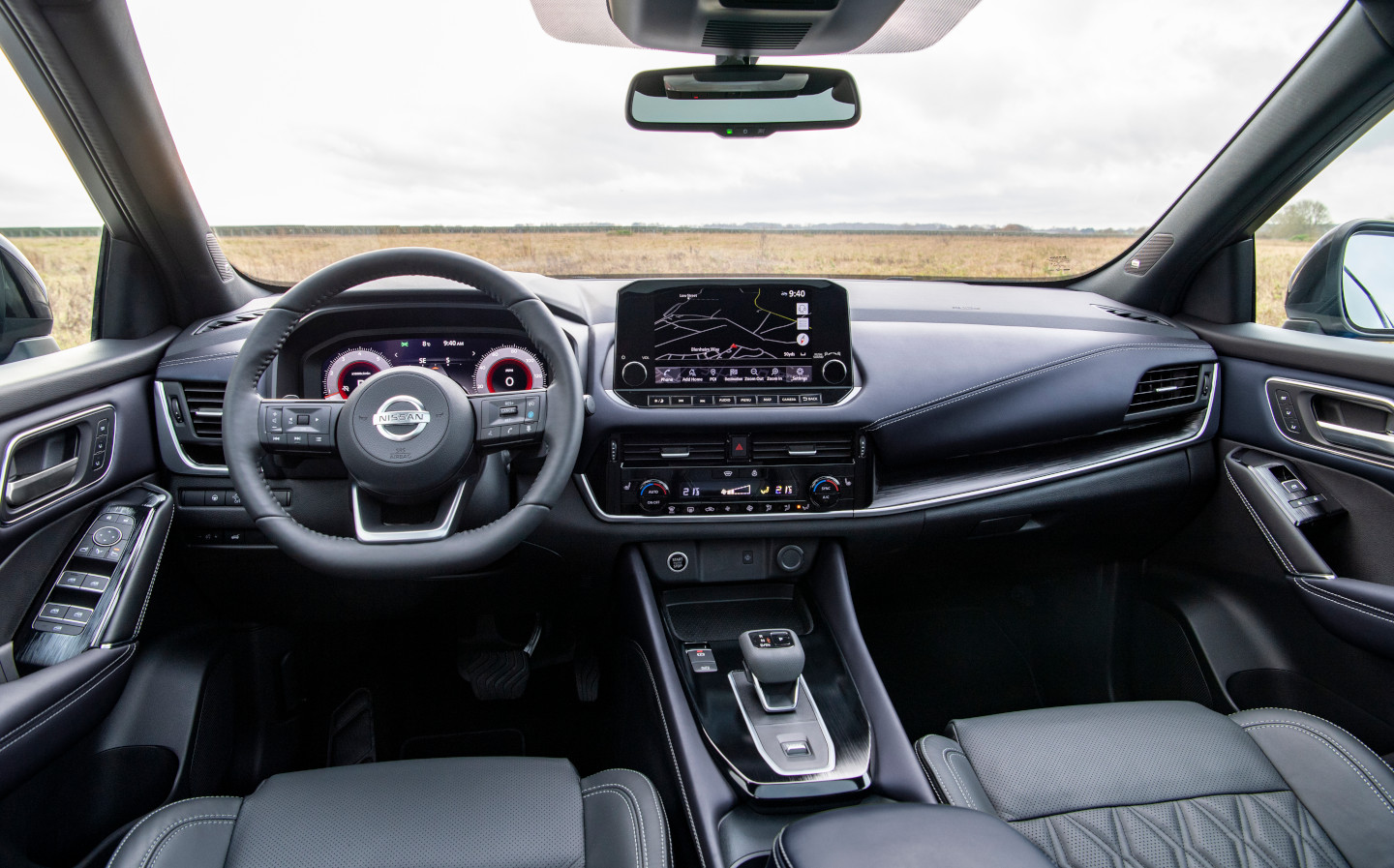2021 Nissan Qashqai revealed, gets new e-Power hybrid option
Best-selling model offered as an e-Power hybrid for first time
THE THIRD generation of the hugely popular Nissan Qashqai has been revealed, and it focuses on all the things that have made the crossover SUV such a hit in the past: value for money, practicality and efficiency, particularly with a new Qashqai ePower hybrid version.
The Qashqai is one of Europe’s favourite cars, having sold 34,000 units in the UK last year despite a catastrophic downturn in the market due to coronavirus. Since its introduction in 2007, more than three million Qashqais have been sold, says Nissan.
New Qashqai’s conservative exterior design
In its press material Nissan uses a whole host of automotive design buzzwords to describe the looks of the new Qashqai — “athletic”, “muscular” and “dynamic”, to name a few — but to many eyes the 2021 model will appear to be a fairly conservative progression of the second-generation car. If it ain’t broke, don’t fix it, as the adage goes.
Unsurprisingly, the Qashqai has grown a bit, though — the new car is 35mm longer, 32mm wider and 25mm taller than before, although proportionally not much has changed.
The biggest styling differences come at the front of the car. The grille, while maintaining the “V-Motion” shape, has become slightly bigger to suit contemporary tastes. Meanwhile, LED technology has allowed Nissan to play around with the headlights a bit, and the result is a rather striking, elongated boomerang-shaped cluster.
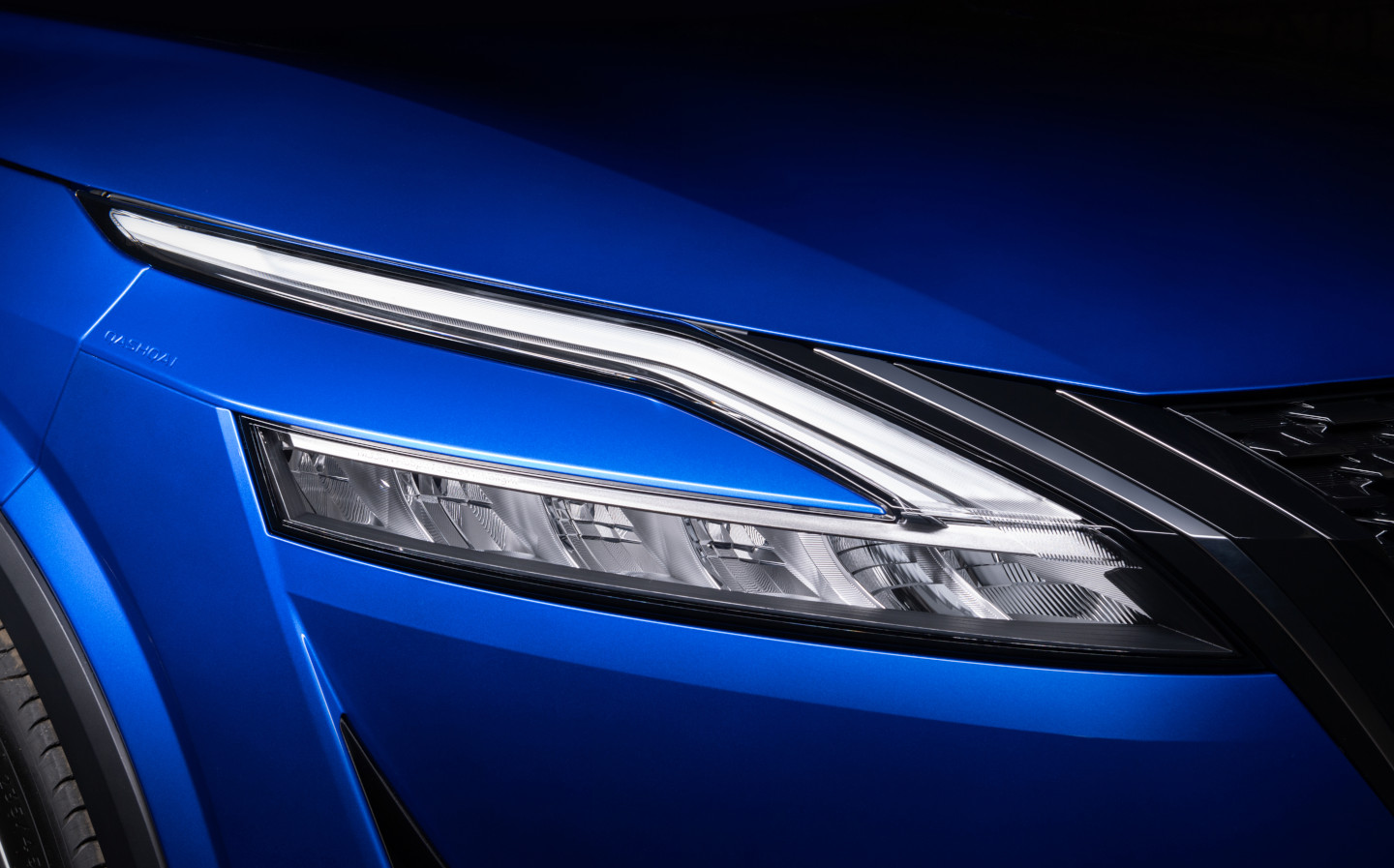
The rear lights have become slimmer and are now positioned horizontally, while the “Qashqai” lettering moves from the left of the number plate to just above it.
For the first time on a Qashqai, 20in wheels will be available — on the previous generation, 19in was the biggest on offer.
What’s the 2021 Qashai like inside?
The interior is where Nissan has to deliver on one of new Qashqai’s major selling points: appearing to be more luxurious than its price tag would suggest. Nissan has done that through the introduction of new white ambient lighting as well as HD displays and a number of upmarket touches.
A new, 12.3in fully-digital driver’s display sits in front of the driver, and can be manipulated to show a variety of information including navigation, vehicle info and entertainment. The screen is controlled through a new dial on the steering wheel.
The central infotainment system is a bigger, higher-resolution nine-inch display that is compatible with both Apple CarPlay and Android Auto. Other new tech includes a 10.8-inch heads-up display (HUD) that projects important information onto the windscreen, as well as optional Bose audio.
On the top spec models customers can even opt for diamond-design Nappa leather seats with massage functions, which it’s claimed take 25 days to produce.
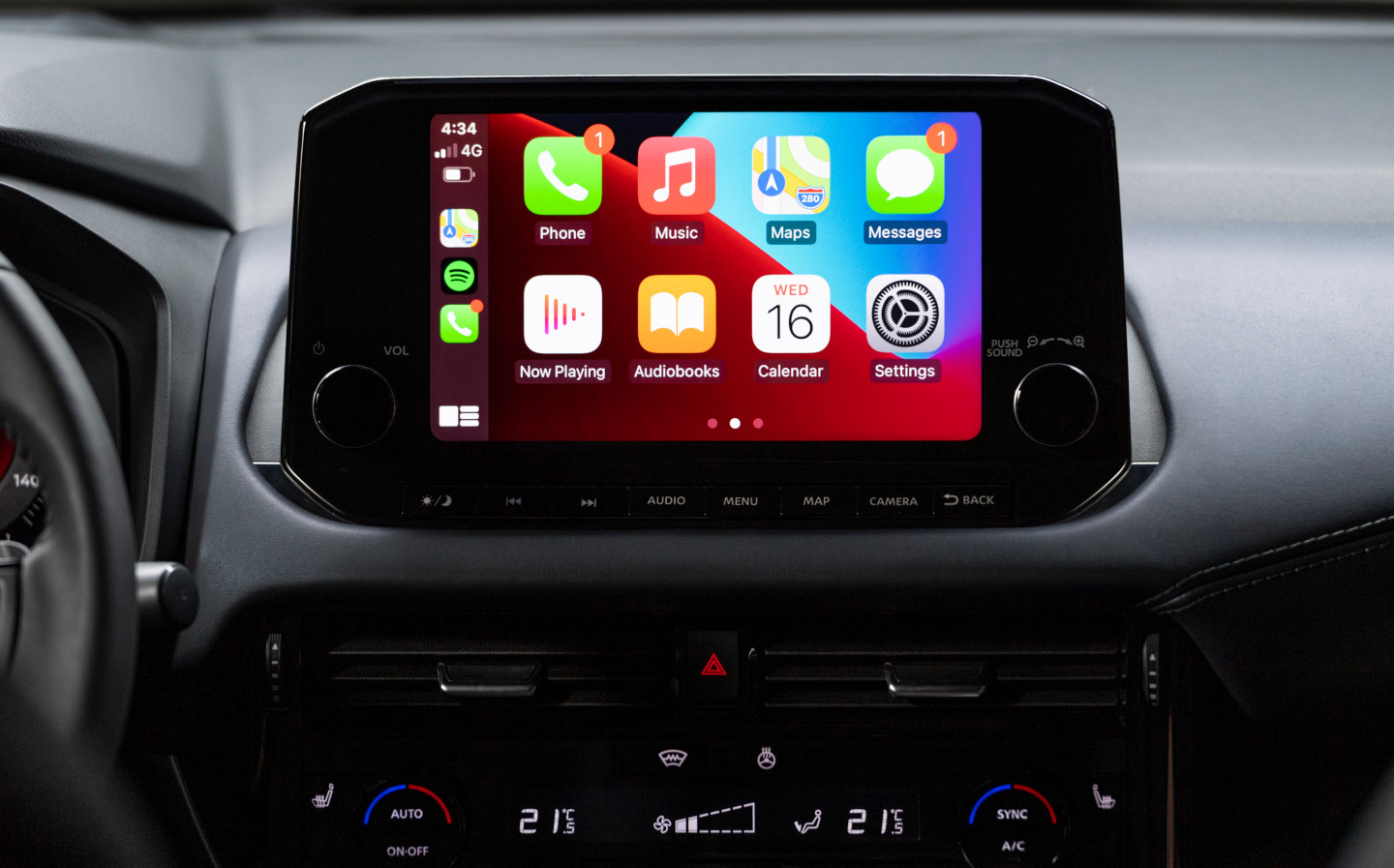
Nissan has also worked at improving visibility, by widening the opening angle of the windscreen and moving the exterior mirrors onto the door, allowing the A-pillars (the steel frame either side of the windscreen) to be narrowed.
The larger dimensions of the vehicle mean that interior space is now more generous — rear passengers have 608mm of knee room, up 28mm compared with the outgoing model — while the higher roof results in an extra 15mm of headroom for all occupants.
A new ‘e-Power’ hybrid Qashqai
Of the 2021 Qashqai’s powertrain options, the headline-grabber is the range-topping hybrid, which combines a petrol engine with a 187bhp electric motor.
Unlike with some hybrids, the wheels are powered at all times by the electric motor, and the petrol engine acts as a generator. This means that the Qashqai e-Power hybrid does not need plugging in, and because the electric motor drives the wheels, torque is available instantly, which results in quicker acceleration.
Nissan also claims the engine always runs at its optimum rate, allowing it to constantly achieve the best economy possible. But unlike a plug-in hybrid, the new Qashqai e-Power can’t be run on electric power only.
The e-Power techology has been seen on Japan-only Note superminis but it is the first time it has been introduced in Europe. Nissan has beefed up the system for the Qashqai, though.
Buyers of the e-Power Qashqai will also get to try out the regenerative “e-Pedal” function that reclaims energy normally lost as heat under braking and enables “one pedal driving” — whereby the brake pedal isn’t needed for much of the time. A similar function is already available on the Nissan Leaf pure-electric car.
Mild-hybrid petrol Qashqais also available
The other two powertrain options available for the new Qashqai are both 1.3-litre petrols with mild hybrid technology. An entry-level option comes with 136bhp, while a slightly uprated version offers 154bhp.
Both are a couple of horses less powerful than the previous engines but the mild hybrid (MHEV) system, which uses a small electric motor to assist the engine under acceleration, makes small improvements to torque delivery and fuel efficiency. The system reclaims energy when braking which is then stored in a compact lithium-ion battery.
Rear-wheel drive and manual gearboxes are offered on both versions of the MHEV powertrain, while a new Xtronic automatic gearbox and four-wheel drive are only available on the 154bhp model.
New Qashqai is lighter and stiffer than before

Despite its increased dimensions, the new Qashqai is 60kg lighter than the outgoing model thanks to new underpinnings developed by Nissan that make use of lightweight materials and advanced welding techniques.
These measures have also made the body 41% stiffer than its predecessor, which should improve the chassis’ handling and responsiveness, as well the car’s overall safety.
Models that have wheels up to 19in have torsion beam rear suspension, while 20in wheel and four-wheel drive models get a more advanced multi-link setup.
Meanwhile, Nissan has gone to work on the Qashqai’s steering to improve feel around the central position, and to reduce friction.
How much space is there inside the new Qashqai?
Thanks to improved rear suspension and the increased dimensions, new Qashqai gains an extra 50 litres of boot space. That takes the total to somewhere around 480 litres — better than some competitors (like the Renault Kadjar’s 473 litres), but worse than others (like the Hyundai Tucson’s 513 litres). A new electric boot lid allows you to open the rear hatch even when your hands are full.
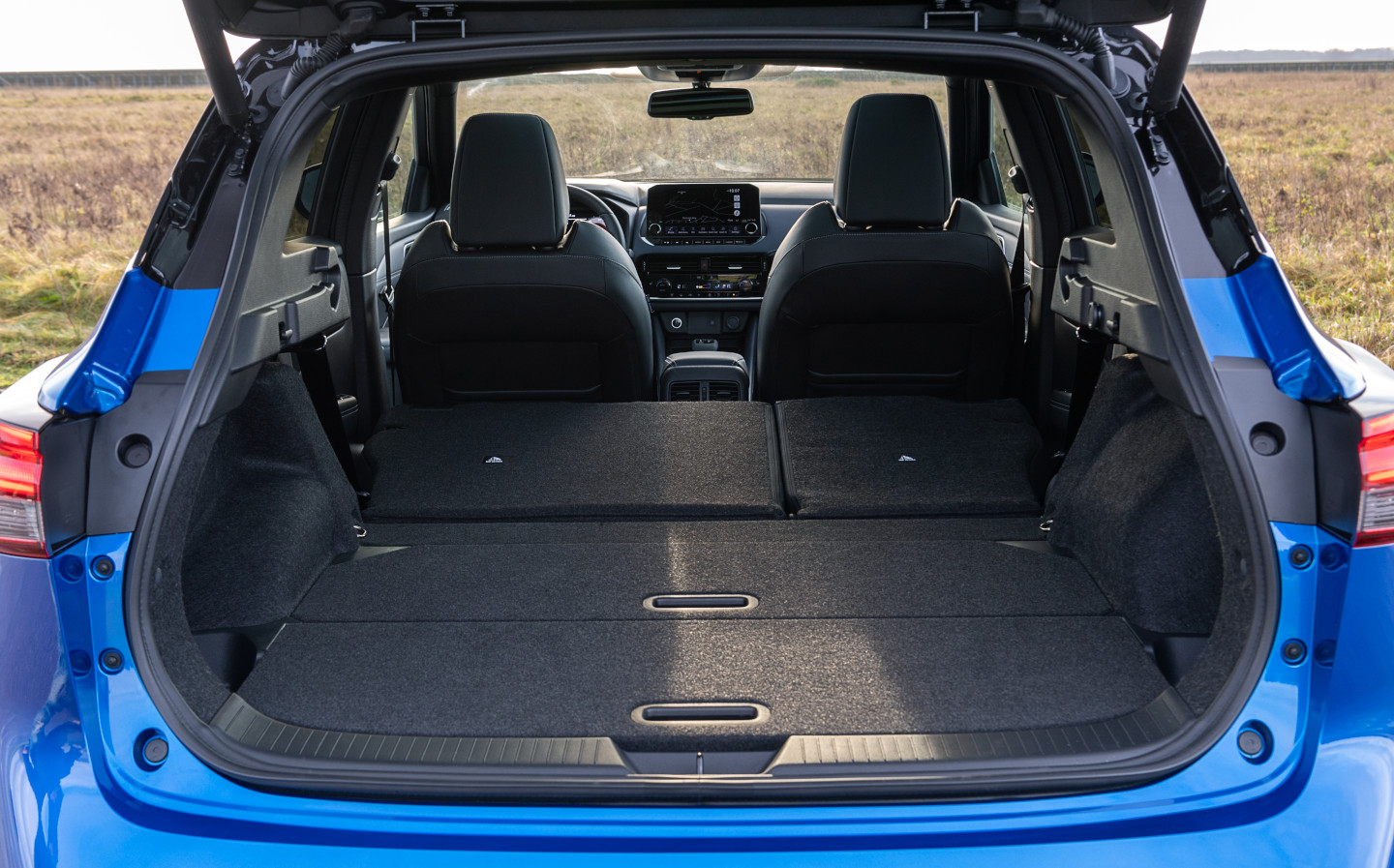
Nissan has also altered the rear doors so that they can be opened up to 85°, making it easier to access children and toddlers, as well as to put baby seats in the back.
A range of driver aids for 2021 Qashqai
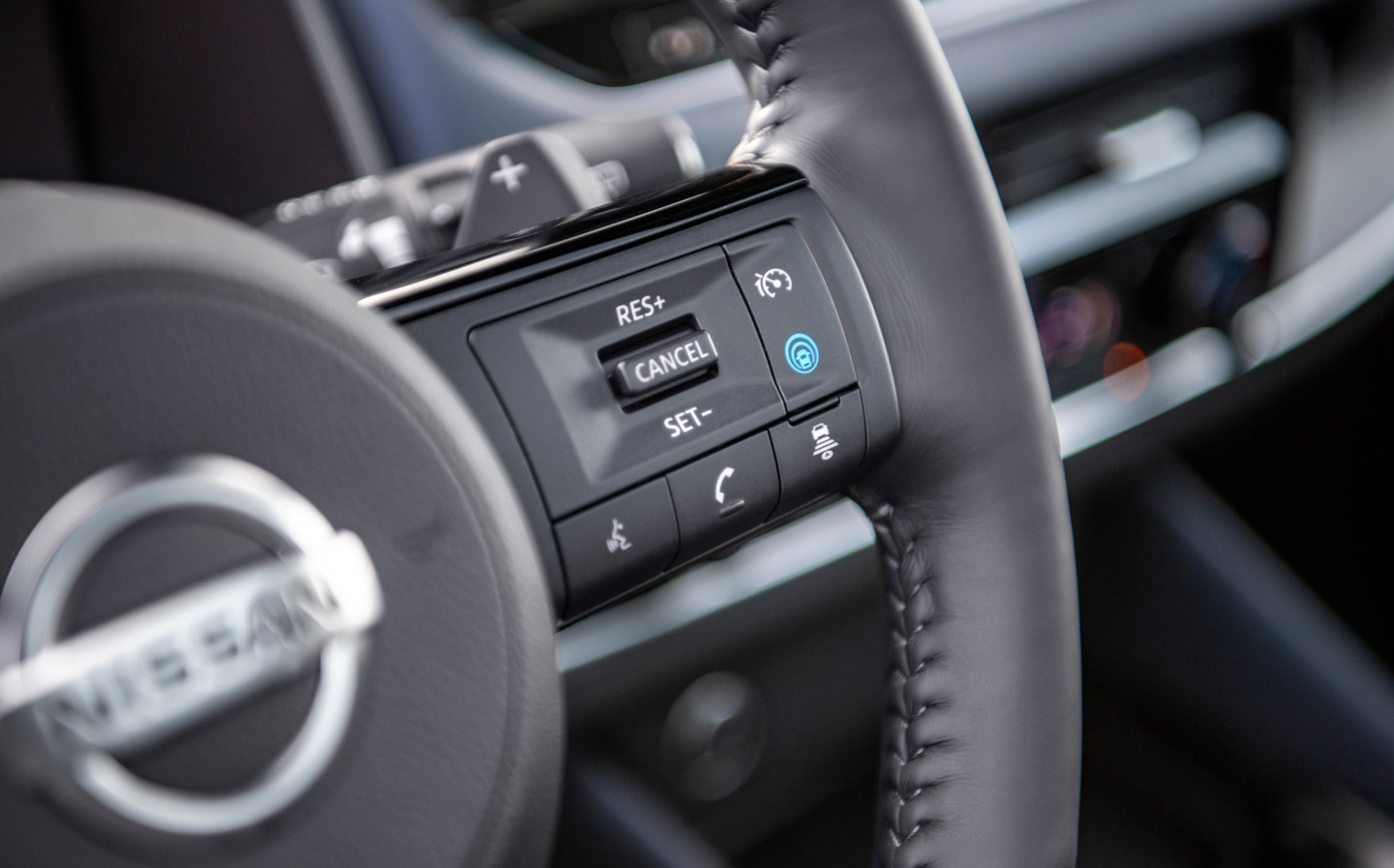
One of the reasons Nissan reckons that the Qashqai has been so successful is because of “enhanced packaging” and “a driving experience from a higher segment”. As such, it’s jam-packed the third-gen Qashqai with a raft of modern driving assist features.
The newest generation of the car maker’s ProPilot system, which is only available on models with an automatic gearbox, can accelerate and brake the car within a single lane on a dual carriageway or motorway, including bringing the car to a stop in traffic. If the car is stationary for less than three seconds, it’ll pull away automatically as well.
Other features of the updated system include the ability to recognise speed limit signs and navigation data and adjust the cruise control accordingly, as well as use the navigation system to slow down the car for sharp bends.
Intelligent Emergency Braking is also offered, while the LED headlights can selectively deactivate some of their 12 individual components to change the shape of the beam when an oncoming car is detected.
2021 Nissan Qashqai price and on-sale date
The new Qashqai will go on sale in early summer, but Nissan has not yet announced its starting price.
Tweet to @KieranAhuja Follow @KieranAhuja
- After reading that Nissan has revealed the 2021 Qashqai compact SUV, you might want to read about the car maker’s upcoming electric SUV, the Ariya.
- If you’re thinking about buying the current iteration of the model while you still can, read our review of the incumbent Qashqai.
- In September Nissan revealed the Re-Leaf concept, which is a version of its electric hatchback designed to be used as an emergency response vehicle.


